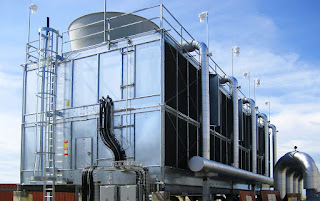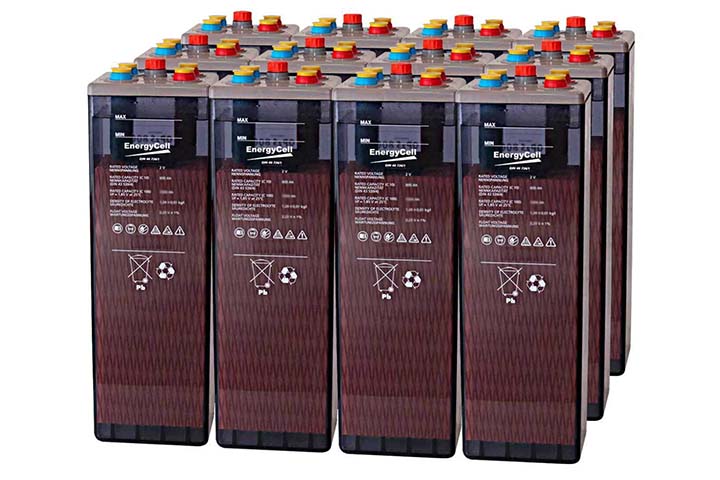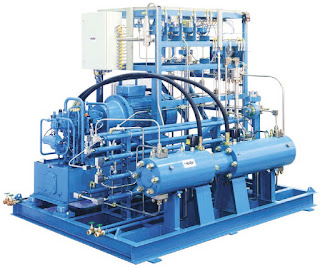Cooling Towers: Useful information and additional sources
There’s no doubt that many large industrial applications require a cooling tower to help them reduce the augmented heat in the system. With the ability to reject heat waste to the open air, these systems are the heroes that can save the day when the produced heat in the systems reach high levels. So in this article, I will help you learn more deeply about this giant hero and understand its parts and efficiency as well as other useful details that expand your knowledge. So, what are you waiting for? You are just a blink away from the information! Keep on reading…
Cooling towers
are designed with different sizes for diverse applications, whether in HVAC or
industrial applications. And they are considered to be one of the most
important components in the industry. There are different ways for their
categorization, based on size, airflow, cooling flow, heat flow, etc. All these categorization and designs… but how
about its efficiency? How to get the most out of them? Does it really worth it?
There are several factors such as temperature,
approach and range, which should be taken into consideration when trying to
figure out cooling tower efficiency. Plus, you need to know a few other related
factors to be able to get the most out of your system and make sure it provides
the maximum efficiency, including the influence of humidity on the temperature,
the maximum amount of heat loss, and the way you can decrease the temperature
of the water in this system.
Temperature plays an important role in cooling towers since it uses the evaporation
process to decrease the water temperature in a manufacturing plant. By passing
the hot water through several fills, the evaporation takes place since the
water’s contact with the air increases.
To
reduce the water’s temperature resulting in an increase in efficiency, you
should consider having ambient temperature as well as humidity and control
these factors along with approach and range. These are the main factors when it
comes to temperature, capable of enabling the operator to ensure the water
temperature drops to the lowest possible level without having to waste a lot of
energy.
The
other effective factor in the cooling tower efficiency is the Approach.
The
wet-bulb temperature in these systems can help you understand the extent to
which evaporation and heat transfer can occur and by using this factor, as well
as the cold water temperature, you can measure the approach which is the
difference between these two. To reach the best efficiency, this number should
be as low as possible. Keep in mind that the normal approach number for an
efficient cooling tower is somewhere between 5 to 9° F in design numbers and
around 75 percent of this number is what your system actually provides.
And
last but not least in the important factors is Range. The range is the
difference between the incoming and the outgoing water in the towers. Since the
hot water enters the system and the cold water exits from it, this difference
would be the range. This number should be as high as possible to ensure an
efficient system. Here you should deal with two factors that can affect the
range: the total heat that can be removed from a water unit, and the amount of
water flow. The efficient amount for these two results in the system’s
efficiency. There are a lot more you can learn to help you maximize the
system’s efficiency. You can access these extra tips and tricks here.
But
hey! There’s another trick that can increase this system’s efficiency and
that’s…. (Go ahead, make a guess!)… The durability and efficiency of its parts!
The parts should be up and running without any problem for your system to
provide the most satisfying results. But what are its different parts?
Some parts of
this system have greater roles into the overall performance of the system, including
cold water basin, fills, hot water distribution basin, float valve, Air Inlet
Louvers, etc. and we’ll go through them briefly in this article.
Cold water
basin and hot water distribution basin accumulate the water. The cold water
basin accumulates and directs the water to the pump suction line and the hot
water distribution basin accumulates hot process water and then distributes the
water down the nozzles. The cold water basin prevents bacteria and removes
stagnant water. But the corrosion and deterioration of these two basins over
time decreases the efficiency of the system even if they are getting the right
maintenance, they still need to be repaired and replaced every once in a while.
Fill media is
the element that identifies the performance of the cooling tower. They increase
the contact surface between the cooling and working media which results in the
rise of the transferred heat. The higher the contact, the lower the chance of
energy loss.
Float valve
with the ability to maintain the water in the tower at the desired level,
decreasing the wasted water.
Drift
eliminators that can capture the moisture and water droplets to prevent the
loss of process water, as well as the air inlet louvers which block the
splashing of the water are both among the important units in a cooling tower
that can help increase its efficiency while also decreasing its energy loss
when maintained right.
There are other
parts that help such a system run. This source can provide the
most accurate information about different parts to help you expand your
knowledge around the subject.
Now that you’ve
learned so much about cooling towers, how about a quick glance at the two most
popular types, the Cross-Flow and the Counter Flow?
This type is
among mechanical drift towers. The name comes from the arrangement of the fill
in this system that enables the hot process water to flow down the fill media
vertically with the gravity force and the air flows horizontally to cool down
the falling water.
This type
includes a fan on its top to induce airflow into the fills and louvers to get
in touch with the hot water drops as one of the steps toward the goal of the
system.
There are a lot
of advantages when you use a cross-flow cooling tower such as having an access
door for inspection as well as easy access to the internal mechanical
components. Plus, they can operate at cold climates too which makes them
perfect for a wide variety of applications.
There are a lot
more to learn about cross-flow type including its parts, application, etc.
which can be learned from here.
In this type,
the fill media has been installed horizontally under the hot water distribution
basin and with the flow of the air through the fill, the heat will be absorbed
when the water flows down the fill. The airflow in the cross flow type is
opposite to the process water stream which explains the name of this type. The
fan in this type is at the top of the nozzles, pulling the air into the fill
media.
This type
offers maximum thermal performance which is one of the reasons that made them
more popular among other types. This design is also space-efficient die to its
horizontal cross-section of the tower. Another advantage of counter flow
cooling tower is their low power consumption and minimal maintenance! If the
type is interesting for you and want more information on the topic, visit here.
Care to share
your knowledge and experience about cooling towers? Drop a comment and let us
hear from you!
Sources:
https://www.linquip.com/blog/increasing-cooling-tower-efficiency-calculation/
https://www.linquip.com/blog/cooling-tower-parts/
https://www.linquip.com/blog/crossflow-cooling-tower/



Comments
Post a Comment